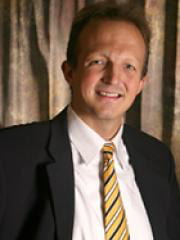Posted by Morgan
 Studying abroad is hard for engineering students: the classes, the rigor, the balance with travel. At times it may seem that a Georgia Tech engineering student will never gain that exciting abroad experience. This is not the case for Sarah Selim though. A rising 3rd year in mechanical engineering, she always knew she wanted the study abroad experience, but she also knew that she wanted the undergraduate research experience as well. Fortunately, she found the answer in GTL.
Studying abroad is hard for engineering students: the classes, the rigor, the balance with travel. At times it may seem that a Georgia Tech engineering student will never gain that exciting abroad experience. This is not the case for Sarah Selim though. A rising 3rd year in mechanical engineering, she always knew she wanted the study abroad experience, but she also knew that she wanted the undergraduate research experience as well. Fortunately, she found the answer in GTL.
For myself, I did not even know that undergraduate research existed at GTL. I figured that my only option was to come to Metz, take a couple classes, and spend my weekends traveling. The same was true for Sarah. But Sarah knew that she wanted to find a work abroad program for the summer and that the paperwork hassles that come along with working abroad are not exactly appealing, so she did a little digging into the research opportunities at GTL. While Sarah was aware that the research opportunities at GTL are usually only available for graduate students, she had the drive to convince them otherwise.
At first, she wasn’t sure if any professor would let her come work at GTL, but after multiple emails to different professors and GTL administration, she finally found a professor that was eager and willing to let her participate in undergraduate research. What a typical tech student- ambitious and motivated!
While her weekends do not fall on the same days as most GTL students (she only gets two day weekends and one three day weekend a month), she finds solace in the type of work she gets to take part in each day. Her project involves robotics research called non-destructive testing which uses a robot that moves along metal surfaces to detect if the surfaces have any defects. Most of her day to day work consists of cad modeling for the project, and because she works with three other graduate students, she is able to get feedback when needed.
So far, Sarah is loving her undergraduate research experience. She has hands on work in her chosen field which provides her with great experience for future endeavors. Sarah also mentioned the balance she receives as a result of working at GTL. She is able to work inside of her comfort zone, being surrounded by Georgia Tech students and faculty, but still be pushed a bit outside of her comfort zone while working in a foreign country, France. After talking with Sarah, it’s safe to say that I am a little jealous. While I’m taking tests on the different forms of “to have” in French, she gets to play with robots all day in the lab.
You might be wondering what kind of travel experience one can get while working abroad. Does one even get to travel? While Sarah’s busy schedule is definitely difficult to coordinate with her friends who are taking classes, she still manages to take short weekend trips and make the most of her time.
Her favorite place so far was Barcelona, mostly due to the fact that Gaudi’s stunning  architecture fills the city. While I find Gaudi’s work to be overt and eccentric, Sarah loved his style; “he created floors that weren’t even flat and he just kind of went for it!”. I might not understand Gaudi, but I understand why Sarah loves him so much. He took risks, was ambitious, and broke the mold, just as Sarah took a chance in searching out her undergraduate research at GTL. Well, clearly it paid off – for both Gaudi and Sarah.
architecture fills the city. While I find Gaudi’s work to be overt and eccentric, Sarah loved his style; “he created floors that weren’t even flat and he just kind of went for it!”. I might not understand Gaudi, but I understand why Sarah loves him so much. He took risks, was ambitious, and broke the mold, just as Sarah took a chance in searching out her undergraduate research at GTL. Well, clearly it paid off – for both Gaudi and Sarah.



 as it was Tim’s birthday! Next thing you know, a group of us pulled out Eurail train passes, hopped on the train to Luxembourg, and prepared to divulge into some delicious Mexican food at a popular restaurant. It was a perfect way to celebrate Tim’s birthday and take a break from studying (even though Briana brought her notes with her on the train). The meal was delicious. While we all love the fresh baguettes and artisan cheeses here in Metz, we have missed the amazing Mexican food that we are spoiled with in Atlanta.
as it was Tim’s birthday! Next thing you know, a group of us pulled out Eurail train passes, hopped on the train to Luxembourg, and prepared to divulge into some delicious Mexican food at a popular restaurant. It was a perfect way to celebrate Tim’s birthday and take a break from studying (even though Briana brought her notes with her on the train). The meal was delicious. While we all love the fresh baguettes and artisan cheeses here in Metz, we have missed the amazing Mexican food that we are spoiled with in Atlanta.  Posted by Morgan
Posted by Morgan

 French made me very annoyed. Not to mention that Germany had possession of the ball the majority of the game! I had to hide this annoyance as best as possible from the French though for fear of being attacked by some of those crazy fans.
French made me very annoyed. Not to mention that Germany had possession of the ball the majority of the game! I had to hide this annoyance as best as possible from the French though for fear of being attacked by some of those crazy fans. 







